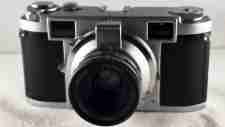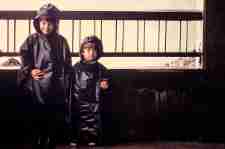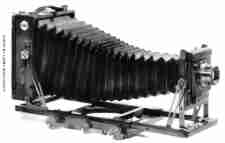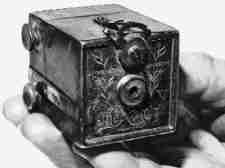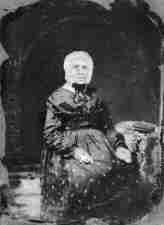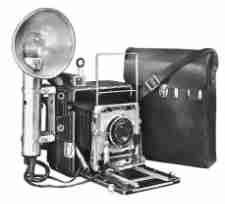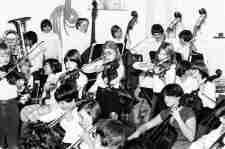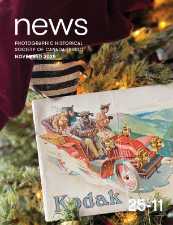
a new way to take and view 3D scenes
Toronto. In the 1950s, a new ‘lenticular’ technology threatened to turn the 3D world on its ear. A camera took multiple shots from slightly different angles. When the images were printed, a special lenticular screen was added to the print to display each ‘strip’ of image making a 3D scene sans glasses.
Unfortunately a special camera was required as well as special print processing resulting in limited appeal. Traditional 3D technology continued on, thank you and the Nimslo camera and process faded into history.
Here is the start of the story in issue 26-1: “Stories in Volume 25 #2 concerning the Nimslo and Its Vancouver Connection and The Wonderview S–102 Single Lens 3–D Photo System have brought our attention to an earlier multi-lensed camera featured in the accompanying advertisement from the 1954 British Journal Photographic Almanac.
“The 1953 issue of the BJP Almanac has the following to say about the process and the equipment: A Portable Camera for Autostereoscopy
“Autostereoscopic three-dimensional pictures – pictures which appear to the observer in full natural relief without any artificial viewing aid such as polarizing spectacle – have become known in this country chiefly through the examples of Deep Pictures which have been exhibited here and used in advertising.
“These used the lenticular system as developed in France by the firm La Reliephotographie, using the Bonnet process. In the Bonnet process each (vertical) lenticular element has twenty strip-images. The negative is obtained by what is termed a “camera sweep”, the one taking lens moves along on an arc round part of the subject, the plate and the lenticular selector remaining however parallel to the plane photographed.
“The camera required to do such a job may weigh as much as half a ton. The twenty strip-images necessarily call for considerable camera-sweep, and thus also for bulky apparatus. Deep pictures were made in a similar manner.
“Maurice Bonnet designed a 26-lens camera called the Multiobjectif, to enable the lenticular system to be used for instantaneous photography, but this was not really portable. Now Mr. Colin Butement, formerly associated with Deep Pictures, in conjunction with Ferrari, of Maidstone, Kent, have produced the Lentic camera which, as the illustration shows, really is portable.
“The best way of describing the Lentic system is to say that the technique has been turned back to front. The making of the strip-images takes place after the exposure has been made. This is achieved by making a specially designed enlarger “sweep” over the lenticular elements.
“The necessary controls, including an electric motor, are incorporated in the enlarger and make for automatic printing. Portability of the camera has been obtained by reducing the number of strip-images to the very minimum possible. This has been found to be six, hence there are six lenses in the camera.
“These six perspectives are projected by the special enlarger on to the lenticular screen placed in contact with a sheet of bromide paper. A master negative is made if large quantities are to be printed.” …
Members read the entire story of the predecessor to the Nimslo and the lenticular system in the 26-1 pdf file on the free members-only DVD/memory stick. See above and at right to join. Email all membership questions to member@phsc.ca.

